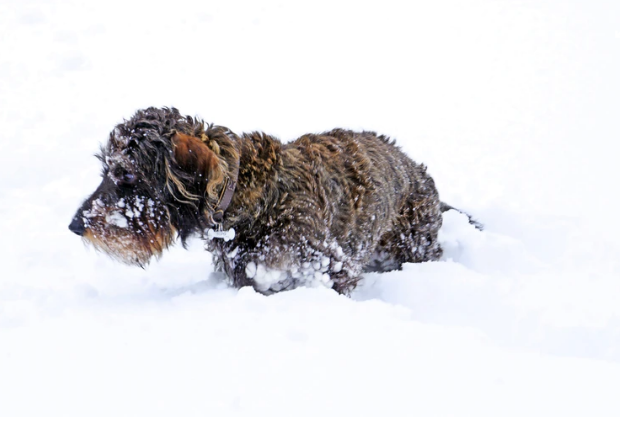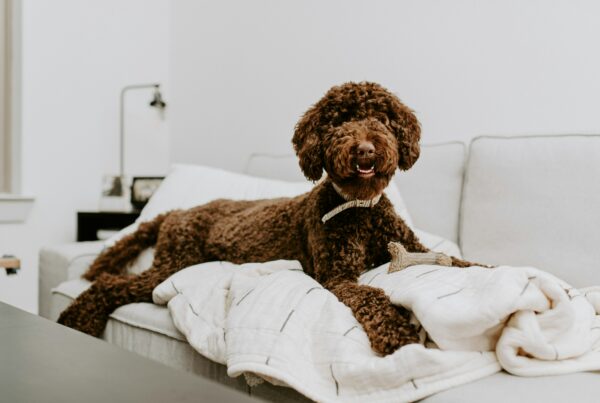Winters in the northeast can be a lot of fun: playing in the snow, snuggling up in front of a fireplace, baking cookies and decorating the house for the holidays. If you have a canine companion however, this is a time to pay extra attention to their health and safety – unfortunately, many hazards come with the cold season.
Bundle Up
If you have a small dog, a dog with a thin coat, an aging dog or a puppy; you need to really make sure they do not get too cold on walks. Wet snow sticks to their legs and tummies and can cool them out quickly. Doggy coats are not just a fashion accessory, but a necessity for many dogs in the winter. Invest in a coat that is water-repellent and insulating. Your pup will enjoy the walks a lot more, and not be prone to getting sick.
Decorate Thoughtfully
Every year, many dogs get seriously ill or die from ingesting holiday decorations. It is quite incredible what all they will try to eat – from Christmas lights over wreaths to scented candles. Especially food-driven breeds like Labradors or Boxers need to be closely supervised around decorations. They can snatch something up within seconds.
If in doubt, do not leave your dog alone in decorated rooms. A trip to the emergency vet to remove a foreign object from your dog’s stomach will make Christmas a lot less festive (and very expensive!).
Don’t Share Treats!
It might be tempting to let Fido join in your joy of cookies, pies and winter comfort food such as mac and cheese, mashed potatoes and big breakfasts with bacon and pancakes. However – please don’t!
Your dog’s body is not made to digest the same kind of foods that we eat. He benefits from a high-protein and low-fat diet. Consuming more fat than usual can lead to painful pancreatitis in dogs, which is an inflammation of the pancreas that requires immediate veterinary care (and often an overnight stay at the pet hospital). If you want to share winter delicacies with him, check online for recipes for dog-suitable cookies or visit a doggy bakery.
Of course, also make sure to keep all foods that are toxic to dogs locked away. Grapes, chocolate, macadamia nuts etc. should never be in reach of your pup.
Exercise Mind and Body
Cold and dark days can cut your daily walks short in the winter time. It is important that your dog still gets the mental and physical stimulation needed to be happy and healthy. If you cannot go outside, how about setting up a mini agility course (https://www.
Keep Doors and Gates Shut
Winter is a time of the year when many dogs get lost, and some of them don’t make it home again. An open gate can let Fido slip out unnoticed, and once he has left your house he will have a hard time orienting himself in the snow and dark. Inside dogs that are not used to being outside in the cold get hypothermia quickly and are not strong enough to find their way home. Before you leave your house, always double-check that your dog is safe and cannot get out. If you have others such as handymen or family members come to your house, make sure they understand how important it is that your dog is kept inside.
Dogs Slip, Too!
Last but not least – not only humans can fall and hurt themselves on slippery ice. Even though they have four legs, our dogs are just as prone to sliding away. Every year we can find videos of dogs slipping around on ice on social media. They are supposed to be funny, but really just show how dangerous it is to have your dog walk or even run on icy surfaces. Dogs can tear ligaments and break bones just like us, and the surgeries required to fix them are expensive and painful. Under no circumstances should you ever purposefully take your dog for example on an icy lake. If it is slippery on your daily walk, pick another path or cut it short to reduce the chance of injury for your dog.
This article was contributed by Steffi Trott of SpiritDog Training.
Share




